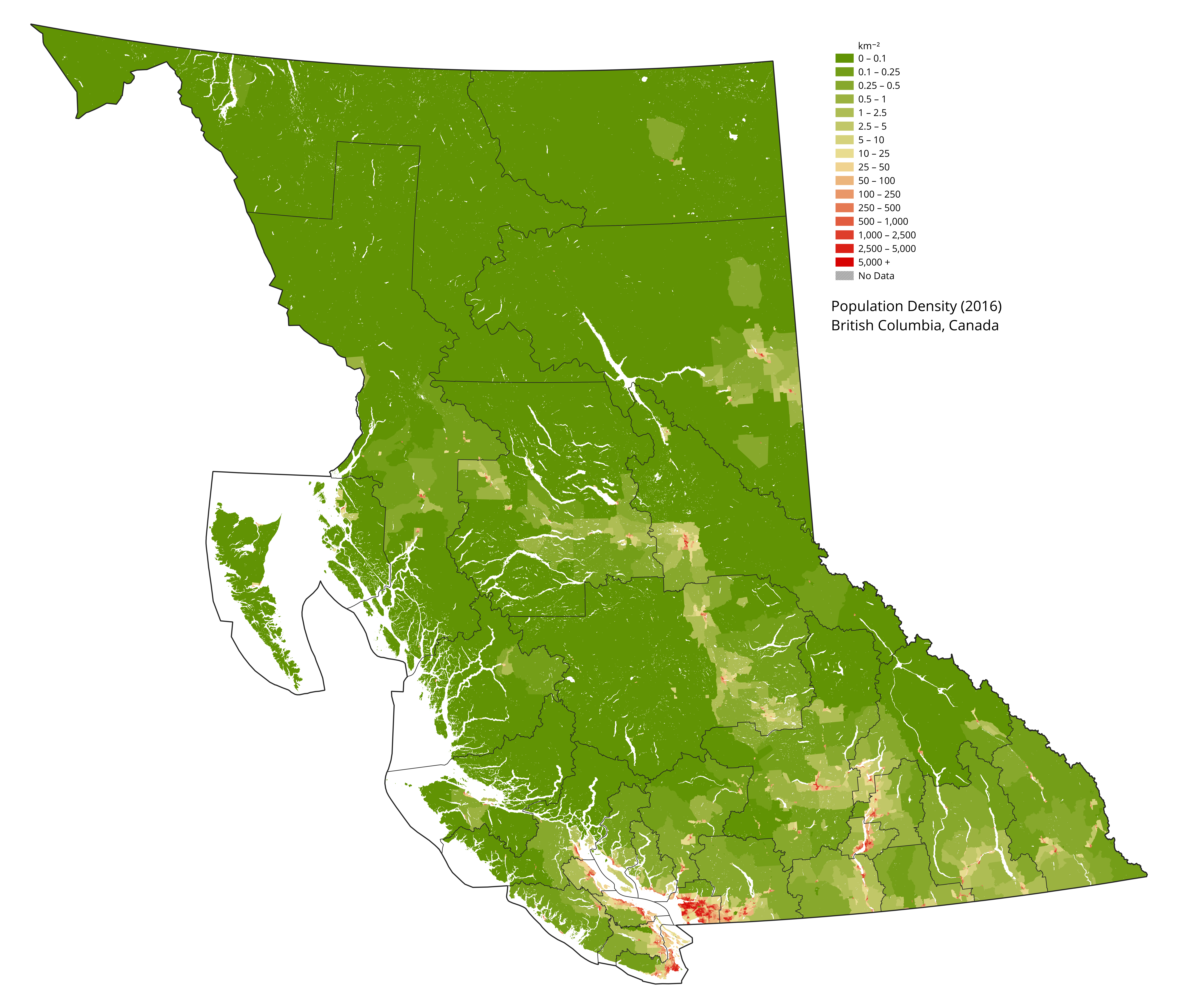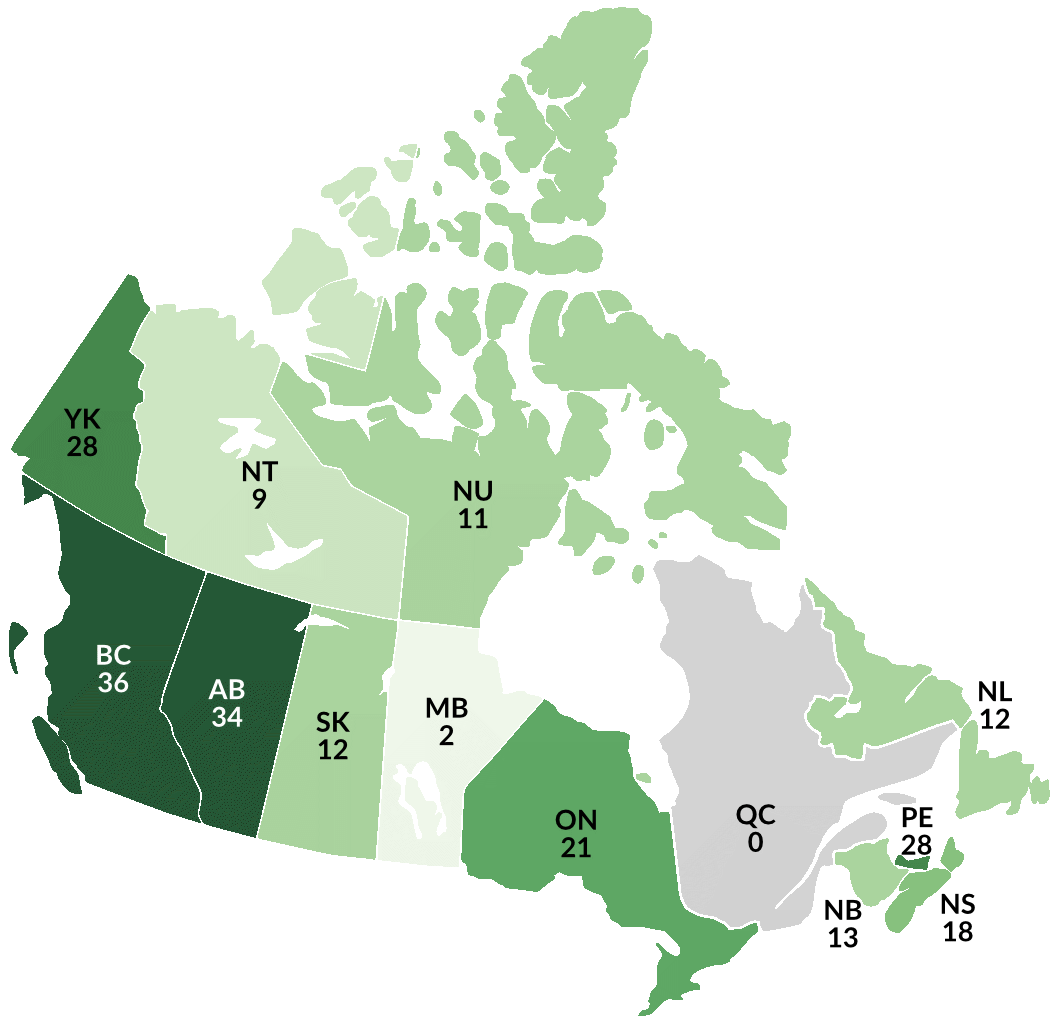Religion In British Columbia on:
[Wikipedia]
[Google]
[Amazon]
 Population of British Columbia 5.368 million (2022)
Percentage of National Population: 13.2% (unchanged)
Population Growth Rate: 5.6%
Population of British Columbia 5.368 million (2022)
Percentage of National Population: 13.2% (unchanged)
Population Growth Rate: 5.6%
Statistics Canada - Population
/ref>
 British Columbia has also traditionally been gaining from interprovincial migration. Over the last 50 years, British Columbia had 12 years of negative interprovincial immigration: the lowest in the country. The only time the province significantly lost population to this phenomenon was during the 1990s, when it had a negative interprovincial migration for 5 consecutive years.
''Source: Statistics Canada''Statistics Canada, table 051-0012
British Columbia has also traditionally been gaining from interprovincial migration. Over the last 50 years, British Columbia had 12 years of negative interprovincial immigration: the lowest in the country. The only time the province significantly lost population to this phenomenon was during the 1990s, when it had a negative interprovincial migration for 5 consecutive years.
''Source: Statistics Canada''Statistics Canada, table 051-0012
''Interprovincial migrants, by age group and sex, Canada, provinces and territories, annual''.
/ref>
 Population of British Columbia 5.368 million (2022)
Percentage of National Population: 13.2% (unchanged)
Population Growth Rate: 5.6%
Population of British Columbia 5.368 million (2022)
Percentage of National Population: 13.2% (unchanged)
Population Growth Rate: 5.6%
Vital statistics
2020 Birth rate: 8.3 births per 1,000 (2021) (Canadian average = 9.9) Death rate: 8.3 deaths per 1,000 (2021) (Canadian average = 8.3)Infant mortality rate
Infant mortality is the death of young children under the age of 1. This death toll is measured by the infant mortality rate (IMR), which is the probability of deaths of children under one year of age per 1000 live births. The under-five morta ...
: 4.0 deaths per 1,000 live births
Life expectancy at birth: 82.4 years
Total fertility rate: 1.17 children born per woman (Canadian average = 1.40)
Age structure
:Source: BCStatsPopulation history
:/ref>
Ethnic Origins
First-generation immigrants from the British Isles remain a strong component of local society despite limitations on immigration from Britain since the ending of special status for British subjects in the 1960s. Also present in large numbers relative to other cities in Canada (except Toronto), and also present in BC ever since the province was first settled (unlike Toronto), are many European ethnicities of the first and second generation, notably Germans, Ukrainians, Scandinavians, Yugoslavs and Italians; third-generation Europeans are generally of mixed lineage, and traditionally intermarried with other ethnic groups more than in any other Canadian province. In recent decades, the proportion of those of Chinese and Indian ethnicity has risen sharply, though still outnumbered by the historically strong population of those of German ancestry. Visible minorities have become an important factor in ethnic-based politics, though most visible minorities are less numerous than the long-standing non-British European ethnicities making up BC's "invisible minorities". ''Note: The following statistics represent both single (e.g., "German") and multiple (e.g., "part Chinese, part English") responses to the 2006 and 2016 Census, and thus add up to more than 100%.''Projections
Indo-Canadians
Visible minorities and Indigenous Peoples
:''Note: Statistics Canada defines visible minorities as defined in the Employment Equity Act which defines visible minorities as "persons, other than Aboriginal peoples, who are non-Caucasian in race or non-white in colour".''Languages
Knowledge of languages
The question on knowledge of languages allows for multiple responses. The following figures are from the2021 Canadian Census
The 2021 Canadian census was a detailed enumeration of the Canadian population with a reference date of May 11, 2021. It follows the 2016 Canadian census, which recorded a population of 35,151,728. The overall response rate was 98%, which is sl ...
and the 2016 Canadian Census
The 2016 Canadian census was an enumeration of Canadian residents, which counted a population of 35,151,728, a change from its 2011 population of 33,476,688. The census, conducted by Statistics Canada, was Canada's seventh quinquennial census. ...
, and lists languages that were selected by at least one per cent of respondents.
Mother tongue
Figures shown are for the number of single language responses and the percentage of total single-language responses. Numerous other languages were also counted, but only languages with more than 2,000 native speakers are shown.Religion
The largest denominations by number of adherents according to the 2021 census were Irreligion (atheist, agnostic, and so on.) with 2,559,250 (52.2%); Christianity with 1,684,870 (34.4%); Sikhism with 290,870 (5.9%);Islam
Islam (; ar, ۘالِإسلَام, , ) is an Abrahamic religions, Abrahamic Monotheism#Islam, monotheistic religion centred primarily around the Quran, a religious text considered by Muslims to be the direct word of God in Islam, God (or ...
with 125,915 (2.6%); Buddhism with 83,860 (1.7%); and Hinduism with 81,320 (1.7%).
Migration
Immigration
The 2021 census reported that immigrants (individuals born outside Canada) comprise 1,425,715 persons or 29.0 percent of the total population of British Columbia.Recent immigration
A large number of immigrants have lived in British Columbia for 30 years or less. The2021 Canadian census
The 2021 Canadian census was a detailed enumeration of the Canadian population with a reference date of May 11, 2021. It follows the 2016 Canadian census, which recorded a population of 35,151,728. The overall response rate was 98%, which is sl ...
counted a total of 197,420 people who immigrated to British Columbia between 2016 and 2021.Interprovincial migration
 British Columbia has also traditionally been gaining from interprovincial migration. Over the last 50 years, British Columbia had 12 years of negative interprovincial immigration: the lowest in the country. The only time the province significantly lost population to this phenomenon was during the 1990s, when it had a negative interprovincial migration for 5 consecutive years.
''Source: Statistics Canada''Statistics Canada, table 051-0012
British Columbia has also traditionally been gaining from interprovincial migration. Over the last 50 years, British Columbia had 12 years of negative interprovincial immigration: the lowest in the country. The only time the province significantly lost population to this phenomenon was during the 1990s, when it had a negative interprovincial migration for 5 consecutive years.
''Source: Statistics Canada''Statistics Canada, table 051-0012''Interprovincial migrants, by age group and sex, Canada, provinces and territories, annual''.
/ref>
See also
* Demographics of Canada *Population of Canada by province and territory
Canada is divided into 10 provinces and three territories. The majority of Canada's population is concentrated in the areas close to the Canada–US border. Its four largest provinces by area (Ontario, Quebec, British Columbia, and Alberta) are a ...
*Demographics of Vancouver
The demographics of Metro Vancouver indicate a multicultural and multiracial region. Metro Vancouver is a metropolitan area, with its major urban centre being Vancouver, British Columbia, Canada. The Vancouver census metropolitan area, as defi ...
*Demographics of Abbotsford, British Columbia
Abbotsford is a city located in British Columbia, adjacent to the Canada–United States border, Greater Vancouver and the Fraser River. With an estimated population of 153,524 people it is the largest municipality in the province outside met ...
Notes
References